|
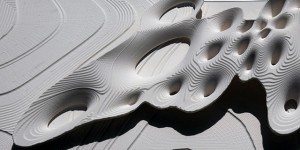 This paper, the latest in a series of investigations further developing the idea of Parametric Semiology, was initially written and accepted to be presented and published at this year’s IASS conference in Amsterdam, however unfortunately I was unable to attend the conference due to my teaching engagement at PennDesign. The complete paper can be read here: This paper, the latest in a series of investigations further developing the idea of Parametric Semiology, was initially written and accepted to be presented and published at this year’s IASS conference in Amsterdam, however unfortunately I was unable to attend the conference due to my teaching engagement at PennDesign. The complete paper can be read here:
Abstract
In a complexly networked society the architect’s core competency is the task of articulation in order to establish the built environment as a communicative frame for its users (Schumacher [9]). A such purposefully designed environment is more legible and navigable than the modernist order of repetition, thus offering a suitable framework for contemporary societal patterns of use.
The adaptation of load bearing structures following different load cases in conjunction with their differentiation according to semiological aspects afford many opportunities for differential tectonic formations, exploiting structural necessities as an instrument of semiotic articulation. Numerous examples of this phenomena can be found in pre-modernist architectural history, from simple structural ornaments and subtle surface articulations to intricately devised surface structures.
Embedded in the studio’s continuous agenda of Parametric Design Research, the project “Parametric Semiology” investigates the semiological capacity of parametrically generated architectural forms and calls for the development of radically innovative and speculative spatial models for the sport venues and their related auxiliary programmes for Rio de Janeiro’s 2016 olympic park.
Buildings are understood as highly integrated complex systems, that are inter-articulated and correlated in order to fulfil urban, architectural, structural, functional, spatial, semiotic and atmospheric criteria.
Using this setup as a testing ground, performance and semiotic aspects become the driving layers of a parametric model in order to test valid tectonic articulations for their semiological potentials. To fully exploit the concept of tectonic articulation the studio closely collaborates with structural engineers, evaluating and orchestrating suitable options. This leads to the development of a series of proto-architectural shell structures, that hold the potential to be organized and differentiated within their own structural logics as well as according to urban and architectural semiological criteria.
Results of this design research and their underlying theories, concepts, logics and strategies are presented and discussed in this paper.
Keywords: design research, parametric design, semiology, semiotics, shell structures, tectonic articulation.
Introduction
Contemporary post-fordist network society is characterized by an unprecedented level of complexity and intensity of communication. Within the context of an ongoing urbanisation process, the ability to navigate dense and complex urban environments is an important aspect of overall societal productivity today. This is facilitated best, if the visual field presents a rich, ordered scene of manifold offerings and also provides clues and anticipations about what lies behind the currently visible layers. The speed and confidence with which one can make new experiences and meaningful connections is decisive. The design of environments that facilitate such hyper-connectivity must be very dense and complex and yet highly ordered and legible. This sets the task set for the semiological project under conditions of variety, density and complexity. (see Schumacher [11])
The core competency of architecture therefore is the task of articulation. Consequently, “The relationship between the technical and the articulatory dimensions leads to the concept of tectonics.” (Schumacher [9]), meaning that technical forms, that are based on engineers’ calculations, are absorbed and further articulated by architects, aiming for increased architectural legibility within the built environment’s framework of social interaction.
At the same time, the development of sophisticated computational design tools – both within architecture and within the engineering disciplines – has opened up the field for nuanced architectonic articulation and multi-layered building configurations. Also, simpler interfaces, common programme platforms and scripting languages make parametric design and engineering technologies alike more tangible for architects, facilitating information interchange and fostering a close collaboration between different disciplines that would have been impossible a few years ago. As a consequence, it has become impossible to conceive architectural design separated from its related disciplines, such as energy design, material science, construction technologies, production techniques, and structural engineering.
In this sense, lately buildings have come to be understood as highly integrated complex systems, sub-systems and components, that are inter-articulated and correlated, complementing each other in order to fulfil architectural, structural, functional, spatial, semiotic and atmospheric criteria. Our built environment is a series of complexly interwoven layers, where a building’s structure is only of them. Functions and programmes can also be integrated by systematic differentiation of one pivotal system, which makes one system work on multiple functional layers, i.e. one series of building components might have structural and atmospheric – or semiotic – properties at the same time.
Within this development, the consequent and strategic adaptation of load bearing structures following different load cases in conjunction with their differentiation according to semiological aspects afford many opportunities for differential tectonic formations, exploiting structural necessities as an instrument of semiotic articulation.
The Structural Ornament
Numerous examples of this phenomena can be found in pre-modernist architectural history, from simple structural ornaments to subtle and intricately devised surface articulations, as structural issues have always had profound impact on a building, not only in terms of its actual form, but also in terms of its ordering elements and surface articulations. Initially facades were ordered and subdivided (and eventually signified) by structural necessities (such as pillars, columns, plinths, beams, or round, pointed or triangular arches) or material formations and patterns (such as stone or ashlar masonry). As a consequence resulting facade articulations were essentially structural.
However, over time most of these elements of ornamentation became part of an historically evolving semiotic system that allowed for an intuitive understanding of the building’s societal functions, its horizontal stratification and the processes and interactions that could take place in them. They were subject to a process of abstraction detaching them from their initial significance and thus becoming mere surface decoration.
This can be exemplified by looking at the ordering principles that were developed for the facades of the typologies of the Italian Renaissance Palazzi. Antique elements were re-contextualized and arranged according to a strict set of abstract rules in order to create a complex system of interwoven semiological elements that enabled contemporaries to unreflectingly understand the buidling’s use and program distribution.
The ground floor’s channeled rustication, for example, alludes to ancient buildings’ massive foundations and suggest a commercial use, the choice of order of columns and the height of each of the subsequent floors hint at the different social strata occupying the respective floors.
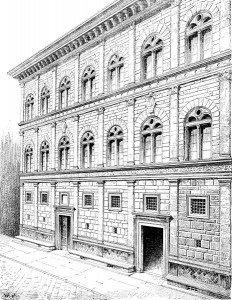 Figure 1: Palazzo Rucellai (Source: Wilhelm Lübke, Max Semrau: Grundriß der Kunstgeschichte. Paul Neff Verlag, Esslingen, 14. Auflage 1908) Figure 1: Palazzo Rucellai (Source: Wilhelm Lübke, Max Semrau: Grundriß der Kunstgeschichte. Paul Neff Verlag, Esslingen, 14. Auflage 1908)
Alberti’s Palazzo Rucellai was one of the first and most important palazzo types, and the ornamental organization of the Italian palazzi in general remained the dominating model for the composition of all types of representative building typologies throughout the centuries until modernism prepared itself to supersede historicism as the predominant architectural ideology, invalidating its semiological and representational concept of ornament and decoration.
As historicism could no longer find adequate answers to the societal problems of that time, within the wake of the modernist project new and different theories emerged, addressing the very same issue but suggesting totally different solutions. This era of contending ideas might be illustrated best by the famous dispute between Josef Hoffmann and Adolf Loos about the function of the ornament.
Matthias Boeckl points out that during this process “[the] erstwhile comprehensive job description holding the architect to be responsible for the concept, structural design, and form of a building disintegrated into its component parts in the process of moderinsation, which could also be construed to be a process of specialisation; Loos claimed the basic cultural idea, Hoffmann the form – but who was concerned with structural design?” (Boeckl [1]).
Beyond Modernism …
It was precisely this deconstruction of the architectural ideal into its constituent parts on the one hand, and the modernists call for establishing close conceptual connections between architecture and industrially assembled products, like ships, aircrafts or automobiles on the other hand, that gave way to an engineers’ approach to the relationship between form, force and material. First dominated by aesthetic perception (in Le Corbusier’s programmatic book ‘Towards A New Architecture’, a whole chapter ‘Eyes Which Do Not See’ (LC [3]) is dedicated to the description of the aesthetic qualities intrinsic to industrialized products), as industrial objects seemed to be able to transfer a new, much desired machine-like aesthetics to architecture, the adoption of industrial production techniques was soon to give way to a whole range of new powerful materials and technologies that would introduce “more technical beauty” (LC, ibid.) into architecture.
The beginning of the 20th century also saw the rise of reinforced concrete as one of the most influentual building materials. Initially imitating the structural logic and appearance of the iron- or steel framed buildings of that time, engineers soon started to see the enormous morphological potential of the new material, as new elegant double-curved shell structures, started to emerge. Remo Pedreschi describes this period as being marked by the designers’ ambitions to “[incorporate] a strong desire for structural expression and structural efficiency – to make virtue out of economy. Thus they drew together form, force and architecture.” (Pedreschi [4]).
In relation to the idea of structural semiotics, this early 20th century development however has some other interesting aspects: These structures were carefully derived from constructed physical models or based on newly developed mathematical concepts (previously structures were designed in empirical ways, mainly relying on tradition, experience and observation) that helped to explain and understand the flow of forces. That lead to an economy of means where structures were optimized according to structural necessities, allowing for an intuitive understanding of the flow of forces through the building. Shell structures allowed the user for the very first time to establish a perceptual relationship between the inside space of a building and its exterior space, as the inner space and the outer form are close to identical. The form could be understood from the inside and the outside alike.
Felix Candela, Heinz Isler, and Eladio Dieste are among the protagonists of this era, as well as Pier Luigi Nervi, whose repetitive, partly precast, yet elegant and delicate rib constructions can be read as first predecessors of today’s differentiated surface articulations.
… and Elegance.
Design research in the wake of new digital design and production strategies with their clear predilection for soft, undulating and malleable architectural forms, has only recently opened up new perspectives for both, the appreciation for shell structures and their potential for optimization and the concept of the ornamental, eventually starting to bring these two strands of research closer together.
Easily accessible software interfaces and ready-to-run scripts as well as the proliferation of advanced fabrication technologies have lead to the widespread generation of sophisticated and differentiated fields of ornamental surface articulations, that due to the increasingly seamless integration of design and production techniques finally start to blur the now long held separation between tectonics and ornamentation. However, while the use of the ornament has become more widespread, there still seems to be a lack of rigor in intellectually pursuing its underlying concepts, or – as Marjan Coletti puts it – based on historic non-figurative ornamentation “[...] a similar generative logic and morphological syntax is nowadays being embraced by parametric and scripted generative techniques to produce myriads of complex, patternised, ornamental topologies, although the endeavour […] usually drifts towards the generic and the dogmatic, and away from the phenomenological and the experimental.” (Coletti [2]).
Almost as if alluding to the inadvertent compartmentalization of the historicist idea of architecture as an all-encompassing effort by Loos and Hoffmann, Coletti identifies two different conceptual strands within the pursuit of the synthesis of digital ornamentation and tectonics, “one [propelling] towards ‘pure form’ through abstraction, [one] towards the purely figural through sensation.” (Coletti, ibid.). Both distinguish the results of contemporary digital form finding processes from representational digital visualizations in the same way a modern painting “[escapes] from the figurative in art.” (Coletti, ibid.). At the same time though, both of them pursue the rationalization of the contemporary ornament as an abstract and theoretical endeavour, that – although intellectually driven – first and foremost speaks to the sensorial and atmospheric qualities of a spatial configuration. While conceptually bridging the gap between tectonic and ornament, it still neglects – following modernism’s threefold distinction – the subject of construction and structure within architectural production. In the context of tectonic articulation it seems to be more productive to develop the underlying logics of surface articulation not as an abstract concept but rather as a goal-oriented process that starts to gradually integrate different systems and subsystems of a building into one coherent and articulate spatial configuration.
The strength of this parametric approach lies in its understanding of architecture as a system of correlations and differentiations seeking adequate and complex articulation. As Patrik Schumacher puts it: “Just like natural systems, parametricist compositions are so highly integrated that they cannot be easily decomposed into independent subsystems – a major point of difference in comparison with the modern design paradigm of clear separation of functional subsystems.” (Schumacher [8]).
The methodical development of these systems aims towards the generation of complex and parametrically controllable geometries, which contain highly adaptive potentials and connectivity (soft patterns). Variation and continuous differentiation of simple elements reflect the changing and mutually influential forces within a system’s different layers in order to eventually articulate a complex architectural system that ties together a spatial organisation, its environment, its inhabitants and their constantly changing patterns of use. This implies controlled and simultaneous development of function, form, structure and material, and requires attention on the associative qualities of all single constituents.
Thus the act of design is no longer framed by “a singular aesthetic end, but by the multiple constraints and ambitions of each project, as negotiated by the architect.” (Rahim A. and Jamelle H. [6]). Nevertheless the result still displays elegance, a contemporary elegance that is supported by articulated complexity rather than by minimalism or simplicity. Successful complex building structures are able to develop a descriptive architectural language that visually reduces the underlying complexity and helps to order, frame and organize the varying patterns of use of their users groups. “An elegant building or urban design should therefore be able to manage considerable complexity without descending into disorder.” (Schumacher [7]).
To design such an ordered architectural and urban environment has become the architect’s core competency in an increasingly complex networked society. Such a clearly articulated environment is more legible and navigable than the modernist order of repetition, thus offering a suitable framework for contemporary societal patterns of use.
Tectonic Articulation
“If we define tectonics as the strategic detournement of an element’s technically induced morphology in order to address substantial functions in the articulatory dimension, then tectonics can be redeemed and integrated within contemporary notions of handling form-function relationships. We might call this strategy of opportunizing on technical details techtonic articulation.” (Schumacher [10]).
If a building’s structure, and consequently its optimization, is understood to be only one layer of its complex and multi-layered organization, then structural expression can not be understood as an end in itself but rather as a means to differentiatedly articulate the substantial social function of the space in question. In this line of thinking, the elegant accentuation of structural elements does not hold any ideological, metaphorical, theoretical, abstract, or sensational value in itself.
Also buildings are not materialized solely to the concerns of technical and structural efficiency, which would be the structural engineer’s approach, but with the clear aim to interarticulate the building’s different systems and subsystems to form one coherent spatial organization, to achieve tectonic articulation, as it is “[the] relationship between the technical and the articulatory dimensions [that] leads to the concept of tectonics” (Schumacher, ibid.)
The Semiological Project
Studio Hadid‘s recent design research project Parametric Semiology – Olympic Park Rio de Janeiro 2016 studies the development of a series of proto-architectural shell structures, that hold the potential to be arranged, clustered, organized and differentiated according to the semiological criteria and that are further articulated within their own structural logics. Semiology and structure become the driving layers of a parametric model in order to test tectonic articulations for their semiological potentials. The Olympic Park’s complex programme, that demands structures of various sizes from large scale stadia to smalll scale auxiliary buildings lends itself to be structurally articulated through a series of related shell structures. At the same time, the vast overall scale of the Olympic Park asks for semiological articulation in order to facilitate orientation, navigation and circulation by meaningfully cohering the builidngs to form a differentiated yet continuous urban field.
In the same way that semiology and a building’s structure become one of the many different interacting layers that all together form what we today consider to be our built environment, “… the architectonic code is one of several fundamental panhuman sign systems which in concert provide individuals and groups with a multi-nodal and multi stereoscopic template for the creation of humanly meaningful realities” (Preziosi [5]).
As a consequence the goal is neither to design a structurally optimised building nor to conduct an exercise in semiological form finding, but the extension of architecture’s formal repertoire through investigation into architecture’s morphogenetic potential within a multi-dimensional solution space that is clearly delineated by previous structural research, which sets the limits for a wide range of possible forms. Parametric design aims towards the exploitation of its generative capacity rather than merely developing a method of discovering inspiring shapes.
Seen from a structural engineer’s point of view on the other hand, these processes might be used to gradually approach “a balance between aesthetic intrigue, innovation and efficiency in new structural forms” as Kristina Shea puts it (Shea [12]).
However, the resulting formal and spatial articulations always remain tectonic, i.e. they remain structurally or technically motivated, rather than being conventionalized and thus becoming ornamental articulations.
Urban and architectural shell prototypes are designed with regards to their semiological readability, based on urban, spatial, programmatic, or social parameters, that were deducted from the specific programme for Rio’s Olympic Park, developing ideas on how semiologic operations can be systematized and intensified in order to be interrelated and tectonically articulated within the framework of the different structural shell systems, that the large span constructions in question require.
Parametric Semiology
During the preparation phase students start to systematically investigate and analyze diffferent structural shell systems, evaluating and cataloguing them according to their architectural, formal, spatial, structural, material, typological, affective and effective properties and their potential to be differentiated according to semiological parameters.
At the same time they try to develop a clear understanding of the project brief and the programmatic and typological components of the Olympic Village in Rio de Janeiro, identifying a series of crucial relations of varying intensities between two or more different components or elements in the brief, that can be described using semiological differentiations.
Subsequently the objective is the development of proto-architectural shell structures, that hold the potential to be arranged, clustered and differentiated according to the semiological relations, that were identified earlier on and that will in turn drive the generation and differentiation of these elements.
During design research phase these proto-architectural shell structures are further developed. Students are required to investigate, if the intended differential qualities actually work in a small scale cluster of buildings. To that end a series of different types in different scales from the list of typologies (i.e. 1 stadium type, 1 housing type, 1 circulation type, …) is selected, arranged and differentiated within the scope of every group’s semiotic concept. The goal of this exercise is a first proof of concept of the group’s architectural hypothesis.
Students are also encouraged to look into the further differentiation of construction, surface articulations, edge conditions, perforations, openings, and ground conditions. Different semiological parameters might affect different components of the shell systems in various ways.

Figure 2: design research phase: devaulting: Testing different column formations.

Figure 3: design research phase: twoFold. Testing different folded surface formations

Figure 4: design research phase: creasedField Testing different surface articulations
During the urban research phase students develop generative strategies to arrange and further differentiate the shell structures according to the urban semiological logics that have been developed through the analysis of site, context and boundary conditions. These strategies might include: aggregation and variation (repeating, multiplying, scaling), packing, flocking, massing, orientation and direction, extremities of scale, hierarchy, sequencing, field conditions, different degrees of transparency, informed grid logics, phenomenological effects, or exploitation of perspective views. In this process organizational and navigational logics, that have been incorporated earlier on, are not discarded but further appropriated and synchronized with the site’s contextual parameters.
Finally all the research and design results are evolved into one coherent semiological design proposal, that simultaneously operates on the urban, architectural, structural, and component level.
The following student projects presented in this paper are selected from design research conducted at Studio Hadid at the Institute of Architecture at the University of Applied Arts in Vienna. Professor: Zaha Hadid. Assistant Professors: Mario Gasser, Christian Kronaus, Jens Mehlan, Robert R. Neumayr, Patrik Schumacher, and Hannes Traupmann.
Selected projects of the studio’s design research were on display at the 13th Architectural Biennale “Common Ground” in Venice.
Project: devaulting
Students: Tudor Sabau, Jakob Travnik, Matthias Urschler
The project aims at redefining the typology of vaults as a means of creating a complex semiotic system, by which its signified content is expressed through the relationship between two fundamental layers of communication: one layer represented by a unified yet continuously differentiated ground condition based on a strict grid logic, which is working in parallel with a second layer of homogeniously differentiated shell typologies.
The project operates semiotically in various scales. On a global scale the masterplan consists of three parts: a housing zone (grided shells), a non-sport venue zone (full shells) and a sporting venue zone (cracking shells). On a local scale these zones are subdivided into ”islands” on which groups of relevant programs (shell types) are further differentiated according to their intrinsic logics. In between the islands it is the landscape that is subjected to contextual differentiation.
The programs are articulated through systematic shell manipulation, such as cracking logics, structural differentiation, material differentiation, formal operations and the adaption of figure-ground relationships. Ultimately, the resulting hierarchies result in a complex yet clear matrix of semiotic readings, which serves as direct as well as indirect guidance to inform the user of the locally, programmatically and socially relevant use of a particular space.
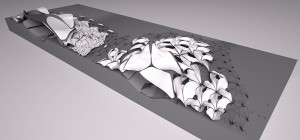
Figure 5: devaulting: Continuous urban field of differentiated shell structures
Project: Semantic Fields
Students: Elena Krasteva, Emanuele Mozzo, Daniel Zakharyan.
Starting off with the research of shells in nature the team decided to concentrate on mushroom structures as they offer an incredible diversity within a single type of species. Grouping Principles, structural behavior and morphological properties were analyzed, abstracted and translated into proto-architectural shell structures.
Semiologically three different layers of intervention were identified:
On the Grouping Layer the main driving force of differentiation is the application of packing principles. Depending on regulatory parameters and based on behavioural patterns different types of deformed agglomerations and necessary strategies for a controlled shell deformation are developed.
On the Shape Layer different morphogenetic parameters (height, size, inclination, …) are exploited to form a differentiated yet semiotically coherent field of shapes. To that end parametric particle spring simulation systems are used, allowing the students to create physically correct curvatures in real time interaction.
On the Surface Layer the key aspect was the transformation of different natural surface articualtions into architectural yet structurally valid components. Several types of gills (linear, additive, branching) were identified and translated into a structural system that establishes a tectonic connection between a surface’s curvature and its level of detail resolution, thus allowing for a structurally efficient and curvature-dependant distribution throughout the entire system.
Site implementation: As any activity can be defined by two main aspects, the activity itself and the connections it establishes within its surrounding, the project explores these connections and emerging relationships between the program and surrounding field and reflects them through the superimposition of these three layers. It studies how the appearance of a particular program triggers certain behaviors and reactions in the field. It examines how the field can capture programmatic identities, propagate them as a system of visual clues and articulate their presence.
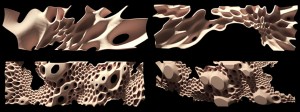
Figure 6: Semantic Fields: Development stages of a proto-architectural shell structure with increasing differentiation.
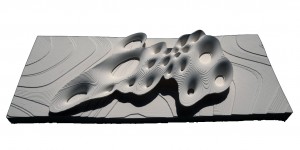 Figure 7: Semantic Fields: One of the final shell strcutures housing a series of different programmes. Figure 7: Semantic Fields: One of the final shell strcutures housing a series of different programmes.
References
[1] Boeckl M., Form follows …?, in Ways to Modernism. Josef Hoffmann, Adolf Loos and Their Impact, Thun-Hohenstein C. et al. (eds.), Birkhäuser, 2015. ISBN 978-0356-0377-4.
[2] Coletti M., Ornamental Pornamentation, in Exuberance. AD 02/2010 March/April 2010, Coletti M. (ed.), Wiley, 2010. ISSN 0003-8504.
[3] Le Corbusier. Ausblick auf eine Architektur. Braunschweig: Vieweg & Sohn Verlag, 1982. ISBN 3-528-18602-X.
[4] Pedreschi R., Form, Force and Stucture – A Brief History, in Versatility and Vicissitude. AD 02/2008 March/April 2008, Hensel M. and Menges A. (eds.), Wiley, 2008. ISSN 0003-8504.
[5] Preziosi D., Architecture, Language and Meaning – The Origins of the Built World its Semiotic Organisation. Mouton Publishers, The Hague/Paris/New York: 1979.
[6] Rahim A. and Jamelle H., Elegance in the Age of Digital Technique, in Elegance. AD 01/2007 January/February 2007, Rahim A. and Jamelle H. (eds.), Wiley, 2007. ISSN 0003-8504.
[7] Schumacher P., Arguing for Elegance, in Elegance. AD 01/2007 January/February 2007, Rahim A. and Jamelle H. (eds.), Wiley, 2007. ISSN 0003-8504.
[8] Schumacher P., Parametricism as Style – Parametricist Manifesto. London 2008. Presented at 11th Venice Biennale 2008. http://www.patrikschumacher.com/ (last visited 27 04 2015).
[9] Schumacher P., The Autopoiesis of Architecture. A New Framework for Architecture. Wiley & Sons Ltd., Chichester, 2011. ISBN 789-0-470-77298-0.
[10] Schumacher P., The Autopoiesis of Architecture Vol. II. A New Agenda for Architecture. Wiley & Sons Ltd., Chichester, 2012. ISBN 978-0-470-66616-6.
[11] Schumacher P., Architecture’s Next Ontological Innovation, in Not Nature, tarp – Architectural Manual, Pratt Institure (ed.), New York, 2012.
[12] Shea K., Directed Randomness, in Leach, Neil et al. (eds.) digital tectonics. Wiley & Sons Ltd., Chichester, 2004. ISBN 0470857293.
Tags: 2015, architecture, conference, design as research, IASS, innovative design and construction technologies, paper, parametric design, parametric semiology, parametricism, research, semiology, shell structures, shells, studio hadid, vienna, writings, zaha hadid
|